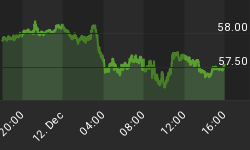I am not a baseball person, but we all know what a "fat pitch" is. It is an easy one to hit. It doesn't mean you will always hit it or even get a homerun, but if you see a "fat pitch" coming, you better take a swing. Investor sentiment has turned bearish here, and this is our "fat pitch". This is a bullish signal because if the market turns higher, we are likely to see accelerated gains over the time that investors are bearish.
In the article, "Putting A Bullish Signal In Context", I make the case for why we should pay attention to investor sentiment. If the bullish extremes that we had only a few couple of weeks ago don't have you convinced (see "The Great Unwind" written on May 8, 2010), then you should go back and read this article which was written on March 8, 2009 (note the date). When investors are bearish and the market turns higher, the gains can be rather significant over a short period of time. It works that way about 85% of the time. Unfortunately, the failures can be rather spectacular, too.
So if you are looking for that sure thing, then this is not for you. There are no guarantees here or predictions that the market is going higher just because investors have turned bearish. It doesn't work that way. However, what we do know is that the majority of investors are wrong most of the time. If you don't believe this, then you were probably buying the bull several weeks ago. But I digress. There is no way to predict if the markets go higher or why they might even go higher. I can only choose when to put my money to work. Now is that "fat pitch". The ball is coming to the plate. I don't know if I am going to hit it out of the park or strike out. But I am ready to swing. Are you?
The "Dumb Money" indicator (see figure 1) looks for extremes in the data from 4 different groups of investors who historically have been wrong on the market: 1) Investor Intelligence; 2) Market Vane; 3) American Association of Individual Investors; and 4) the put call ratio. The "Dumb Money" indicator is bearish and this is a bullish signal. This is the first bullish signal since March 8, 2009.
Figure 1. "Dumb Money" Indicator/weekly
The "Smart Money" indicator is shown in figure 2. The "smart money indicator is a composite of the following data: 1) public to specialist short ratio; 2) specialist short to total short ratio; 3) SP100 option traders. The "Smart Money" indicator is neutral.
Figure 2. "Smart Money" Indicator/ weekly
Figure 3 is a weekly chart of the S&P500 with the InsiderScore "entire market" value in the lower panel. From the InsiderScore weekly report we get the following: "Sentiment Shifts To Bullish, But Questions Of Conviction Linger".
Figure 3. InsiderScore/ weekly "entire market" value
Figure 4 is a weekly chart of the S&P500. The indicator in the lower panel measures all the assets in the Rydex bullish oriented equity funds divided by the sum of assets in the bullish oriented equity funds plus the assets in the bearish oriented equity funds. When the indicator is green, the value is low and there is fear in the market; this is where market bottoms are forged. When the indicator is red, there is complacency in the market. There are too many bulls and this is when market advances stall.
Currently, the value of the indicator is 49.08%. Values less than 50% are associated with market bottoms.
Figure 4. Rydex Total Bull v. Total Bear/ weekly
Where you buying at the market top? Wondering when to buy the dip?
Our readers have been sitting on their hands for several months, and only now are they ready to take action.
Improve your market timing with Premium Content from TheTechnicalTake. For a nominal yearly fee, you will get a unique data set that will show you which way investors (i.e., bull market geniuses) are leaning.
It is independent and original market analysis. To view a recent report click: REPORT.
















